In historic Cairo, nestled between a scattering of people sipping tea at a small street cafe and an impressive Mamluk-era sabbil that once would have provided water to the neighbourhood many centuries ago, is a small and unassuming doorway that gives little indication of what lies behind. Walking through this doorway, a small entrance area suddenly opens up to the calm and tranquil courtyard of Bayt Yakan, a restored Mamluk-era grand residence hidden within the beating heart of Historic Cairo.
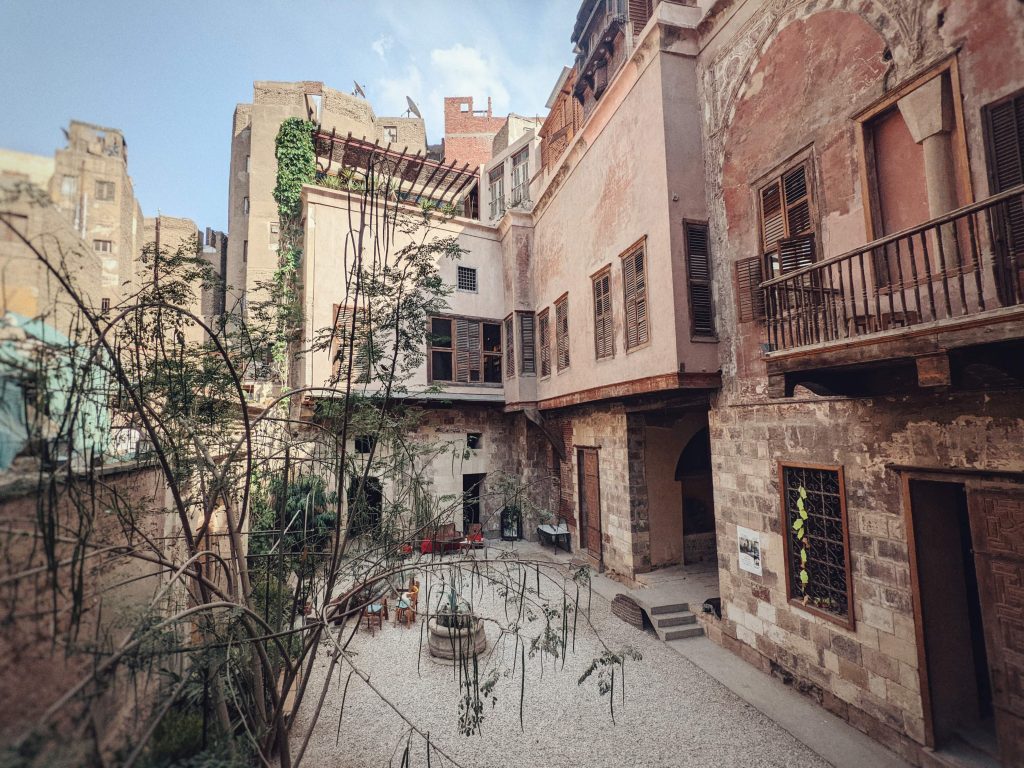
Bayt Yakan, however, is not like other restored palaces and historic buildings you may have gone to in Historic Cairo or seen pictures of online. It is not simply a monument to a bygone age, but a living, breathing and important part of the local community through its hosting of workshops and events and by offering a shaded courtyard adorned with plants and seating for locals, particularly women and their children, to sit and relax away from the hustle of the streets outside.

Bayt Yakan’s Layers of History
Bayt Yakan is situated in the neighbourhood of Darb al-Ahmer within the wider area of Historic Cairo, which is designated by UNESCO as a World Heritage Site due to its incredible wealth of Islamic monuments from mosques, hammams, madrasas, sabbils, quttubs and mausolea, in addition to its profound importance to Islamic history and culture.
While little historical evidence exists on the history of Bayt Yakan, it’s understood to date back to at least 1760 and was built by a man named Hassan Agha Kokelian. It was built in tandem with the sabbil that provided water to the community and the quttub housed above, a quranic reading school for children, which face the street. Sabils and quttubs were a very common form of public outreach to the community throughout the Ottoman period, which presents an interesting continuum with Bayt Yakan’s current program of community outreach through workshops and events.
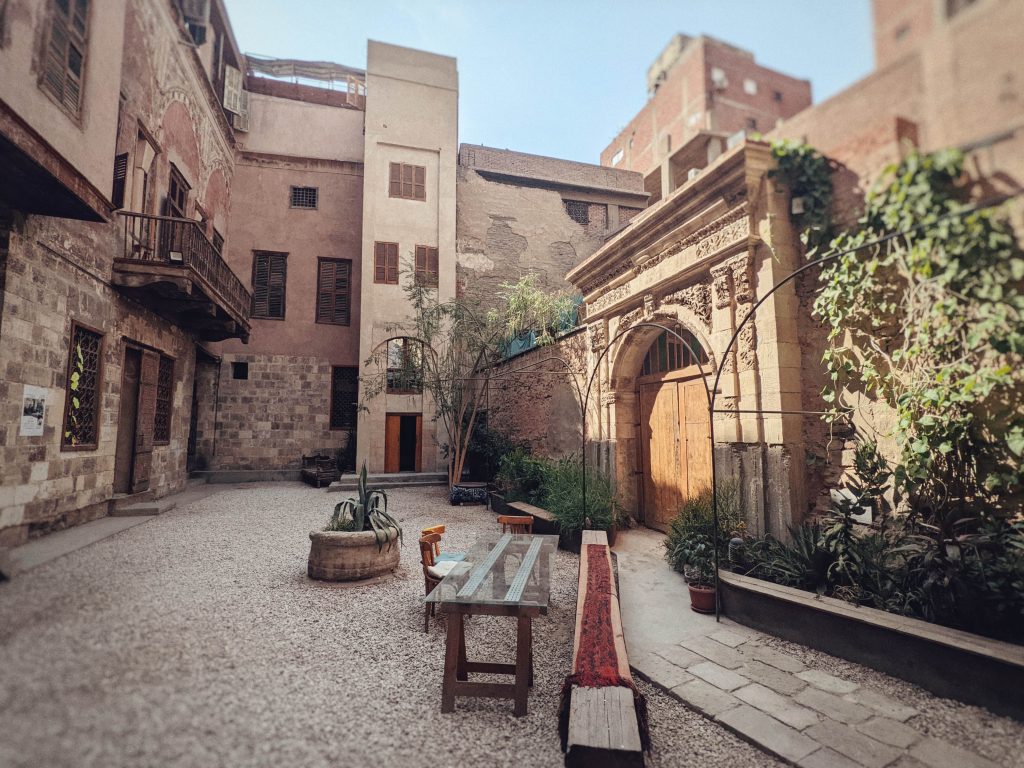
Giving the house its namesake, the Yakan family soon took up residence in the then-sprawling villa, which must have been an important and well-known residence in Cairo during the dynasty of Khedive Muhammad Ali. The first Yakans to reside in the villa were two brothers, Ahmed and Ibrahim, who were senior figures in the Egyptian Army and had the prestige of being the nephews of none other than Khedive Mohammad Ali himself, which would have placed them as important members of Cairene high society. The Yakan family and their residence evidently had such prominence and status that the area surrounding Bayt Yakan is known as El Yakaneya.
The Yakan family continued to maintain prestige and importance for many years, with even a member of the family, Adly Yakan Pasha, serving as the prime minister of Egypt for three separate stretches throughout the 1920s, although it is not believed he ever lived in this house. Adly Yakun Pasha was also appointed to other several high-ranking positions in government, serving as the speaker of the Egyptian senate and being appointed as the minister of foreign affairs and minister of the interior throughout his impressive and influential career.

However, with new owners with different political allegiances came the transformation of Bayt Yakan through a symbolic and deliberate rejection of Mamluk stylings and the adoption of a baroque style that saw its heyday with the rise of Khedive Mohammad Ali and his descendants. From the courtyard, three large Mamluk arches can be seen on the second floor with their impressive stonework and patterns, which once would have led up to an area open to the elements, known as a meqad. However, these large arches have been filled in, fitted with windows, and painted to fit baroque sensibilities, leaving an unusual patchwork of different periods and distinct artistic styles.

A similar juxtaposition can be seen on one of the ceilings of Bayt Yakan, in which restoration work revealed that underneath the painted baroque motifs are intricately carved patterns typical of the Mamluk era. The Yakans and Egypt as a whole were in the process of replacing and destroying Mamluk influences, both in terms of aesthetics and realpolitik. In Bayt Yakan, this architectural conflict of juxtaposed periods layered on top of each other tells the wider story of not only changing aesthetic tastes, but of a defining moment in Egyptian history in the early nineteenth century with the end of Mamluk rule and the beginning of Mohammad Ali’s dynasty, following the infamous massacre of the Mamelukes in the nearby Cario citadel.
Following the restoration of Bayt Yakan, additions from the twenty-first century also added another layer of history to the residence. Solar panels on the roof have successfully made the building self-sufficient and a contemporary seating area and herb garden in the courtyard have helped create a communal space for the neighbourhood to enjoy. With an unusual mix of Mamluk foundations and baroque and contemporary additions, the house appears like a cross-section of sedimentary rock, showing layers of history clearly differentiated by style, colours and materials.
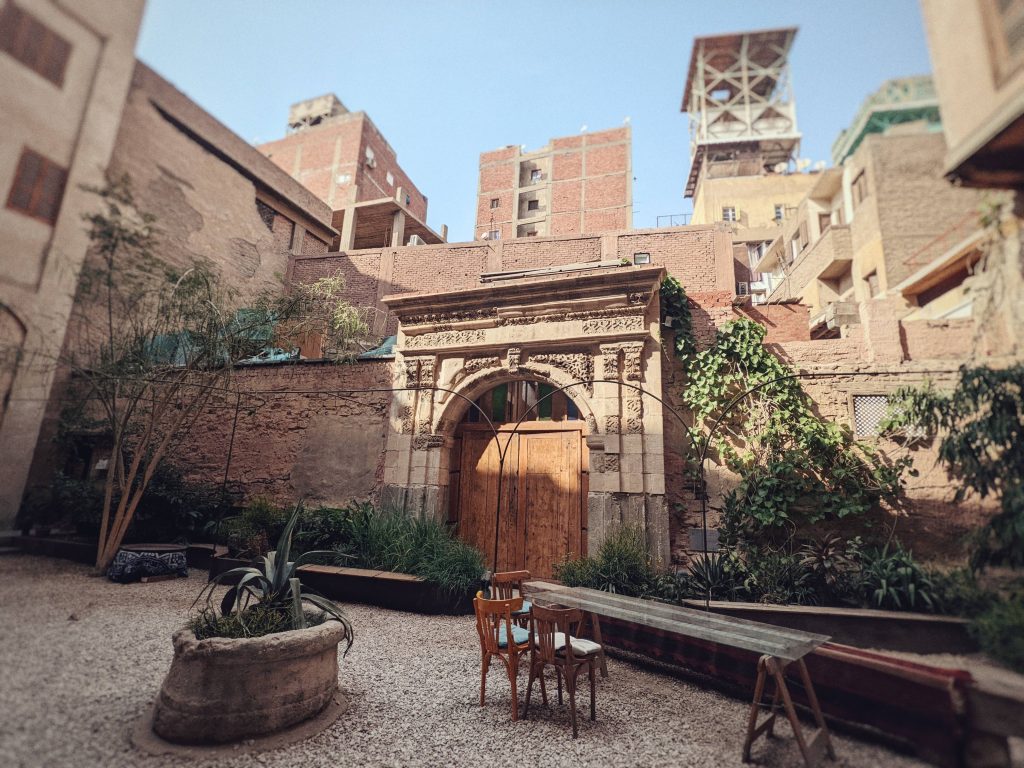
The Revival of Bayt Yakan
Following the last member of the Yakan family to leave the residence in around 1950, an eccentric older woman who rode on a carriage and had a white dog according to local legend, the building was soon taken over by a local butcher and his family. The courtyard became a place to store livestock and the surrounding residence sadly suffered from neglect and disuse, and by time was mostly forgotten, hidden away by its small doorway.
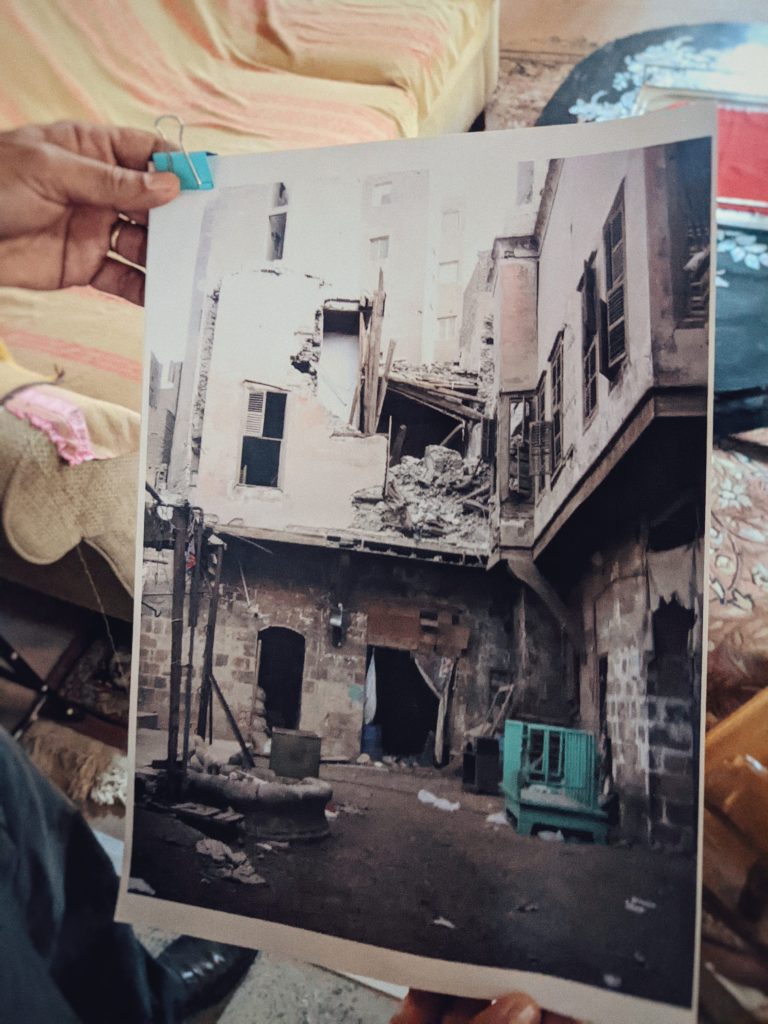
However, in 2009, Dr. Alaa El Habashi, an architect and professor at Menoufia University specialising in heritage preservation, through chance and more importantly great imagination ended up deciding to restore Bayt Yakan and preserve this small but important part of Cairo. Dr. Alaa El Habashi was working on a nearby restoration project when he became aware of Bayt Yakan through meeting the butcher and soon he and his partner, Ola Said, committed themselves to the colossal task of restoring Bayt Yakan. After many years of extensive restoration, Bayt Yakan is now unrecognisable from its previous dilapidated state. This incredible transformation should give hope that no building is ever too far gone.
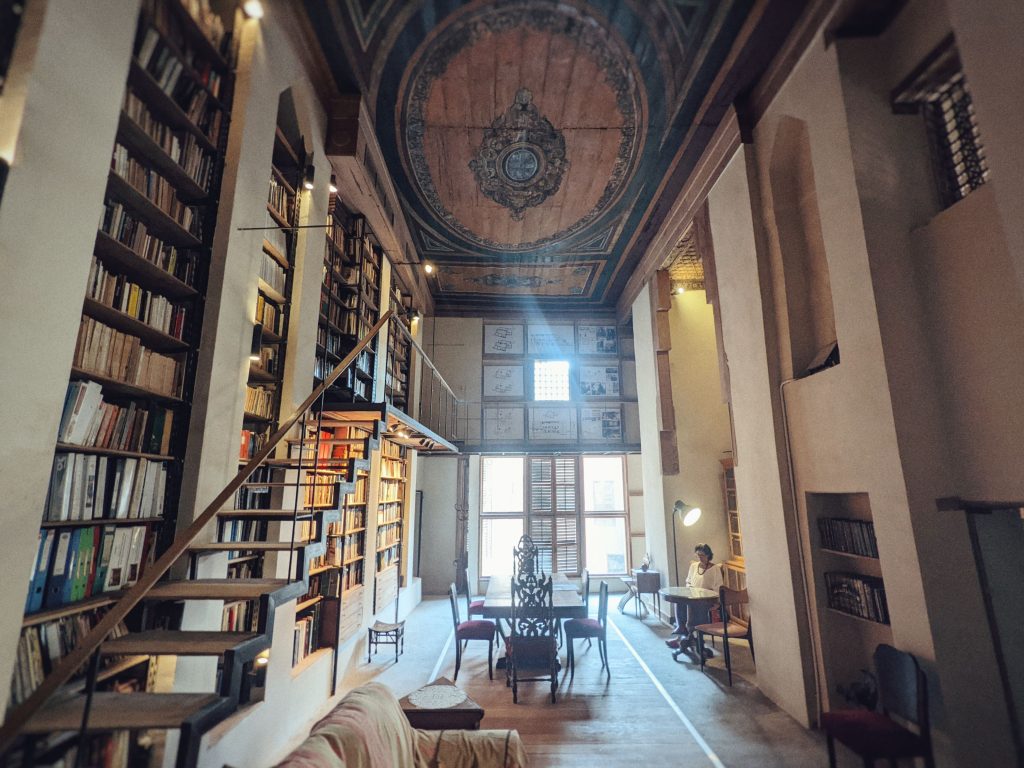
Bayt Yakan’s most recent development is the unveiling of its magnificent rare books library. The impressive library is a beautiful reimagining of the old hall and its contemporary design interventions in this historic space have created something incredibly unique.
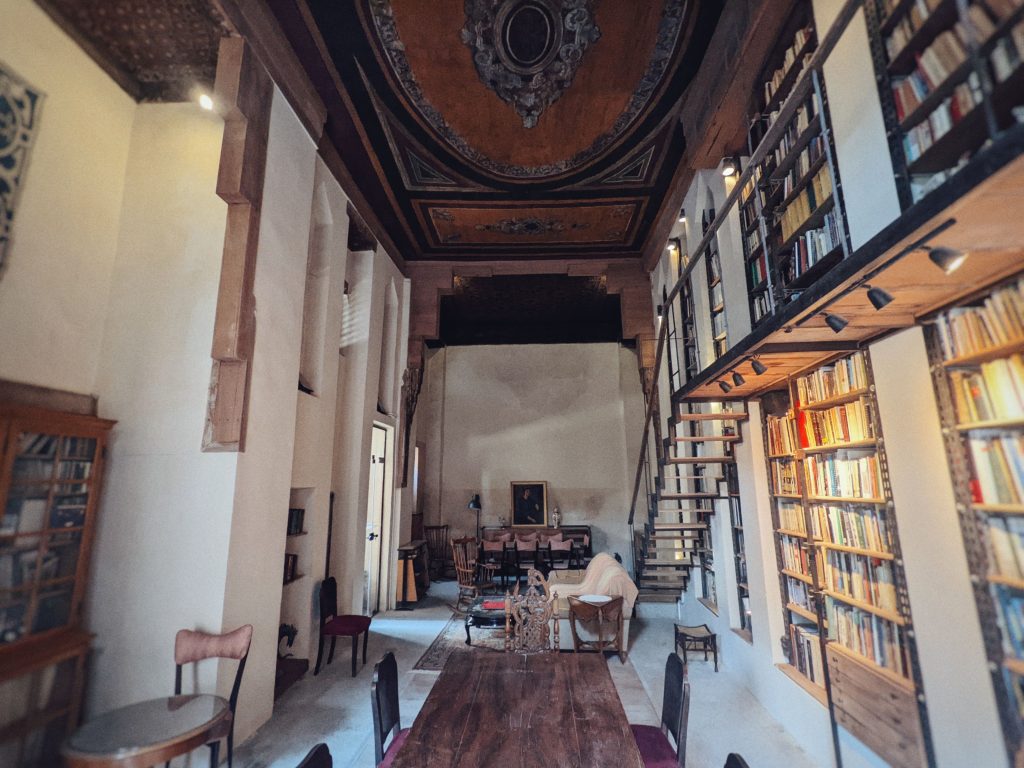
The library is currently by appointment only, but Dr. Alaa El Habashi told me that he plans to instigate a system of borrowing and get a librarian so it can be fully enjoyed by the public. Housing some very rare and important books, particularly on architecture and Historic Cairo, Dr. Alaa El Habashi hopes that the library can become a hub for those interested in heritage conservation in an Arab context and help spur similar initiatives to Bayt Yakan across the region.
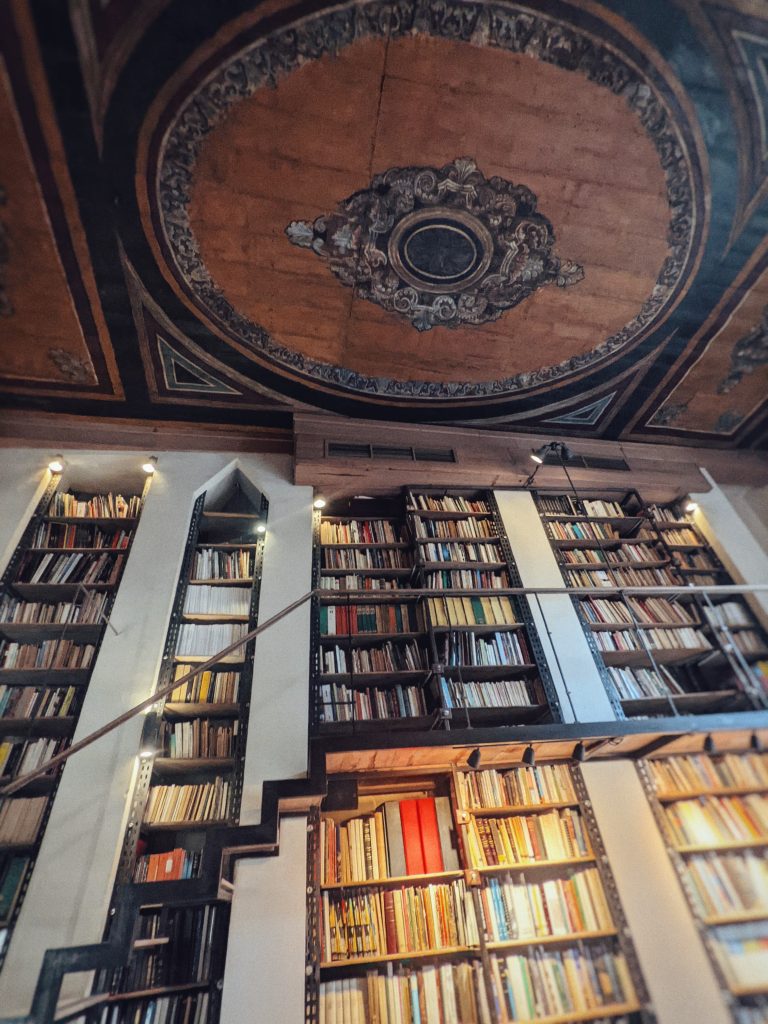
Bayt Yakan as a Place of Rest and Community
While Bayt Yakan is undoubtedly an impressive building architecturally and tells the story of an important part of Egyptian history, its real greatness and value lays in the community it now hosts. Bayt Yakan, in addition to offering an open communal space away from the street, a rarity in Historic Cairo, has put on numerous workshops with the local community. These workshops, which are often aimed at families, explore and promote traditional crafts among other fantastic initiatives
Bayt Yakan has also worked with local craftsmen to support their livelihoods and keep centuries-old crafts alive. The creations of local artisans working with khayyāmiyah, arabesque inlaying, traditional garments, mosaics and pottery are often showcased by Bayt Yakan to display their work to a wider audience.
Bayt Yakan is not some stuffy preserved heritage site. It has become home to a vibrant community and is leading the way as a model for both heritage preservation and sustainable development in historic urban centres. Bayt Yakan has done some incredible things in a relatively short amount of time and I’m excited to see what they do next.
For more information or upcoming events, you can find Bayt Yakan on Instagram here.
WE SAID THIS… Arabesque: Behind The Shapes Of An Authentic Islamic Art



